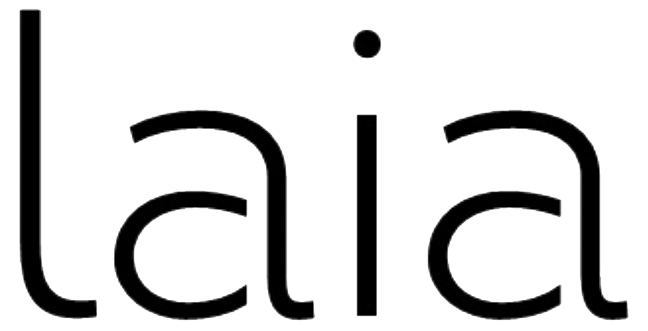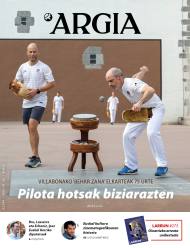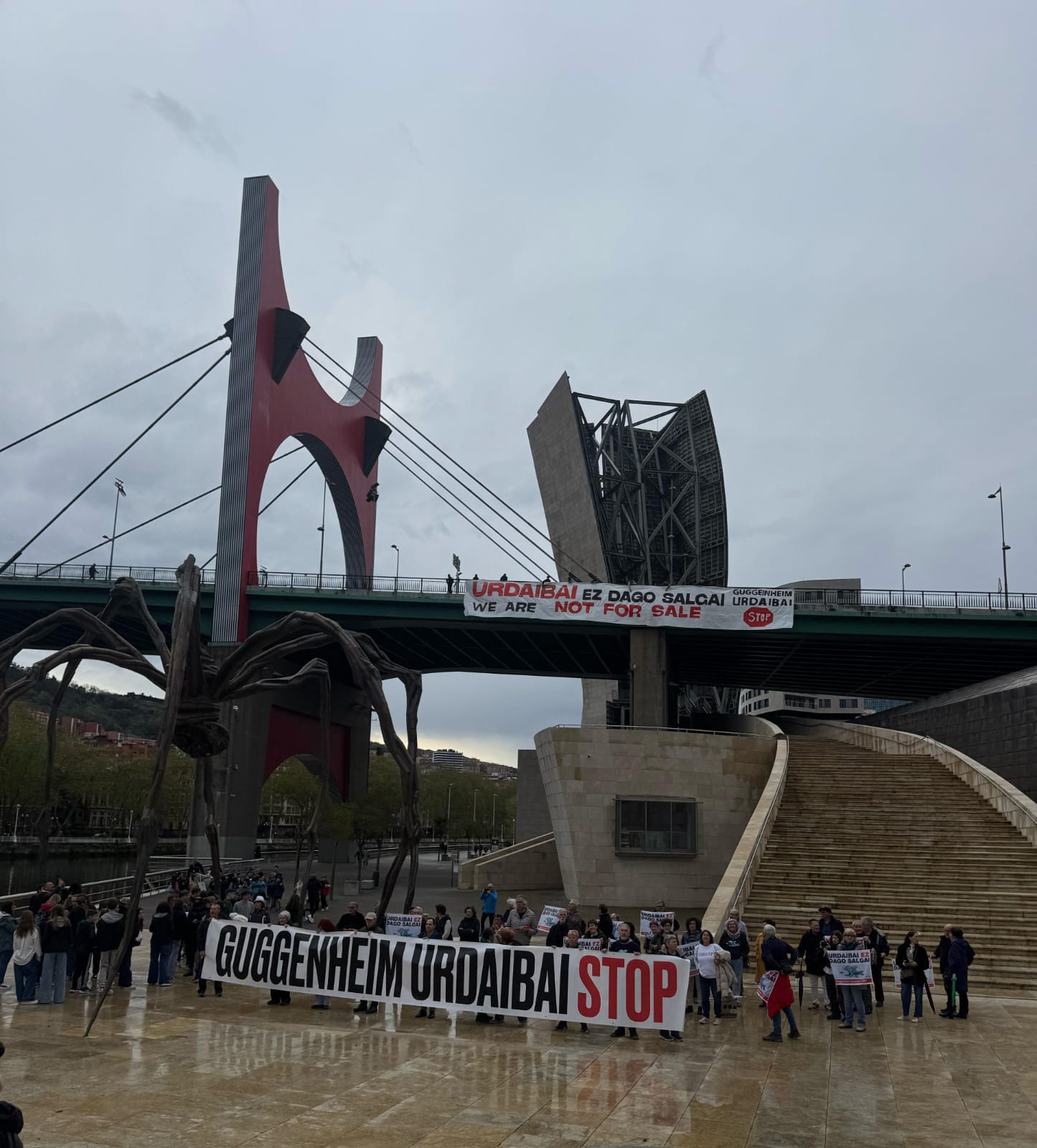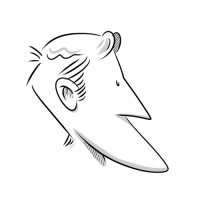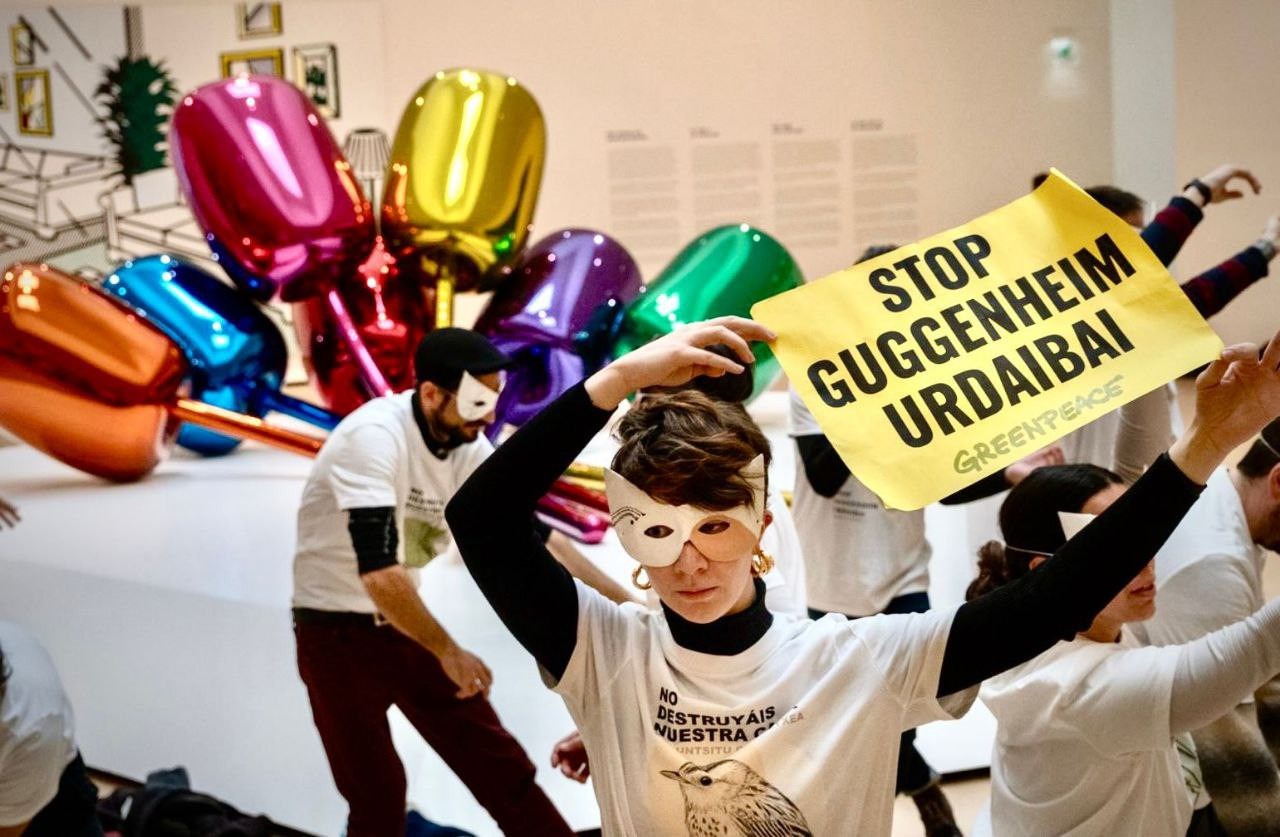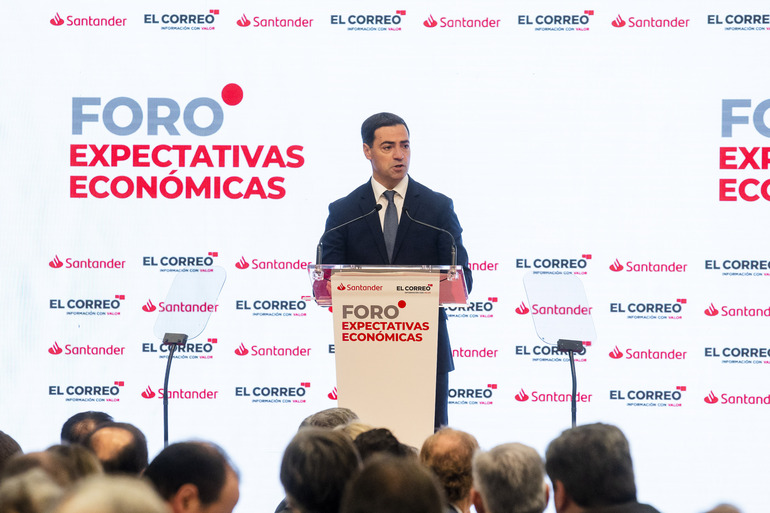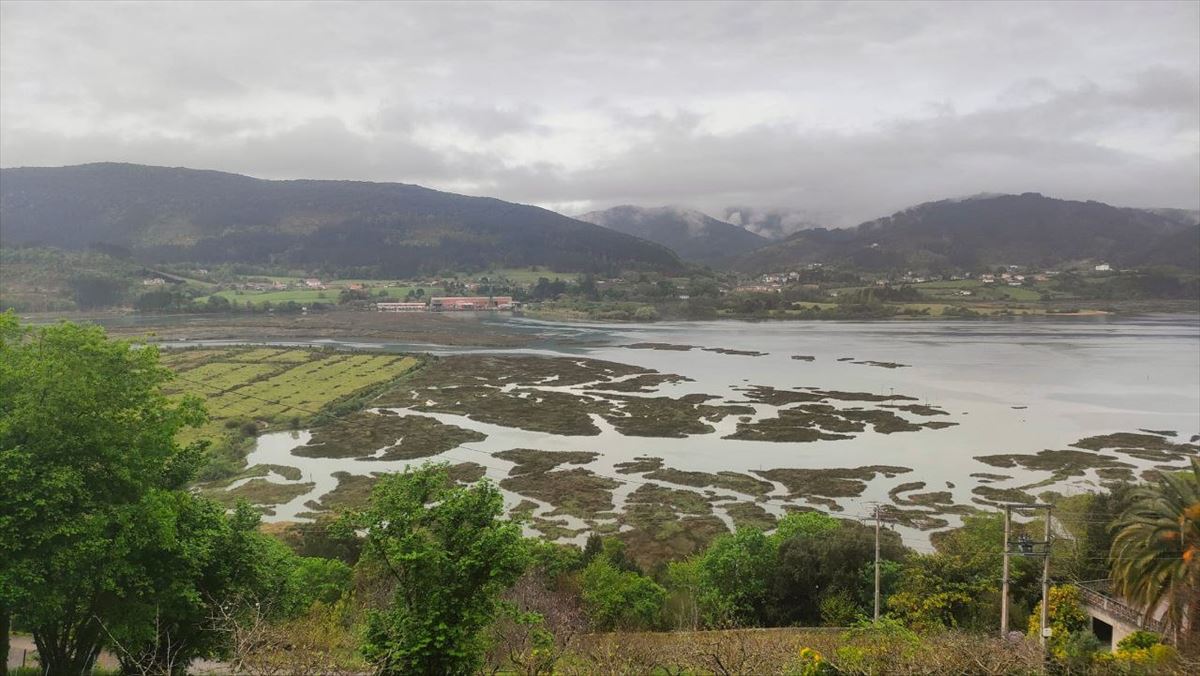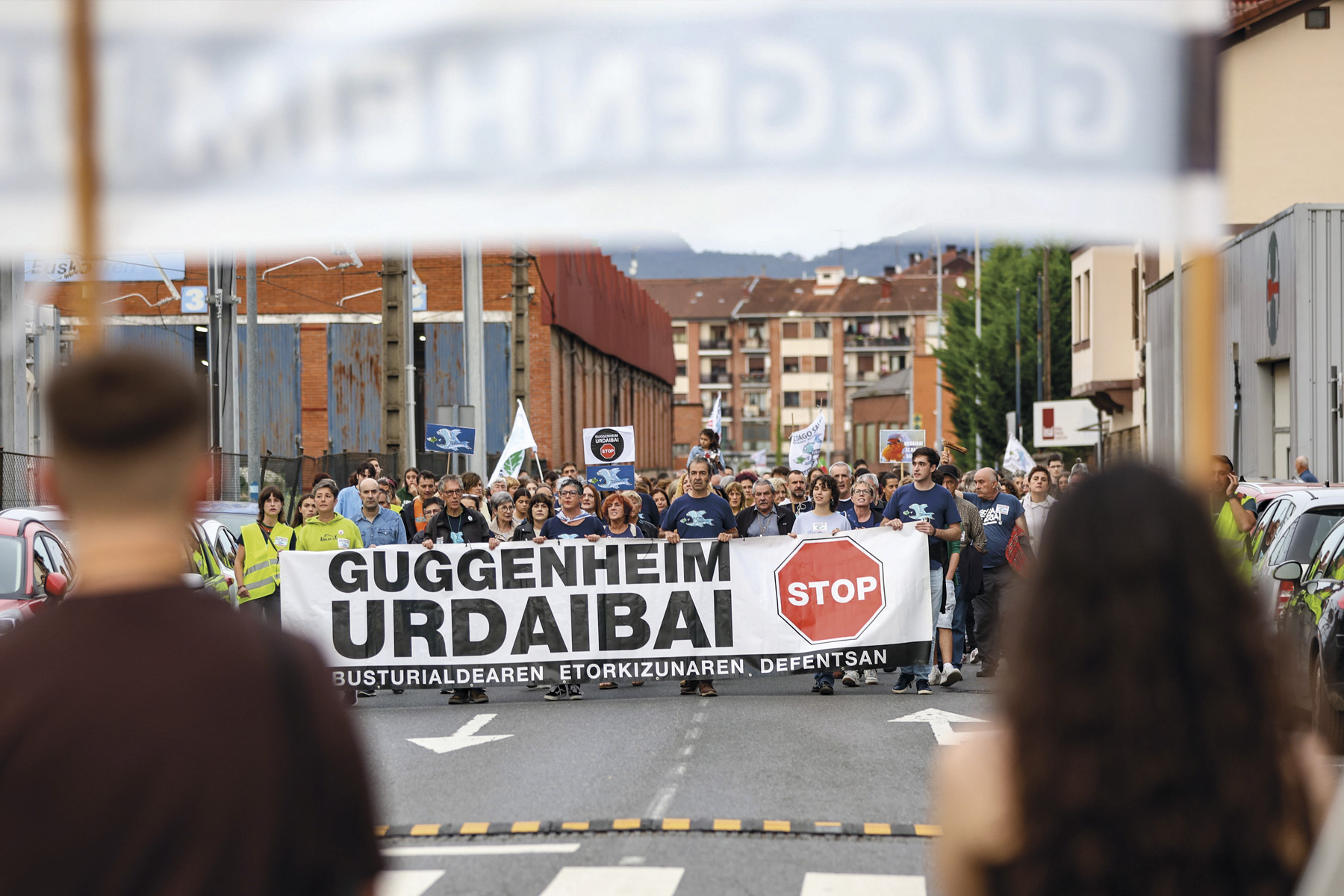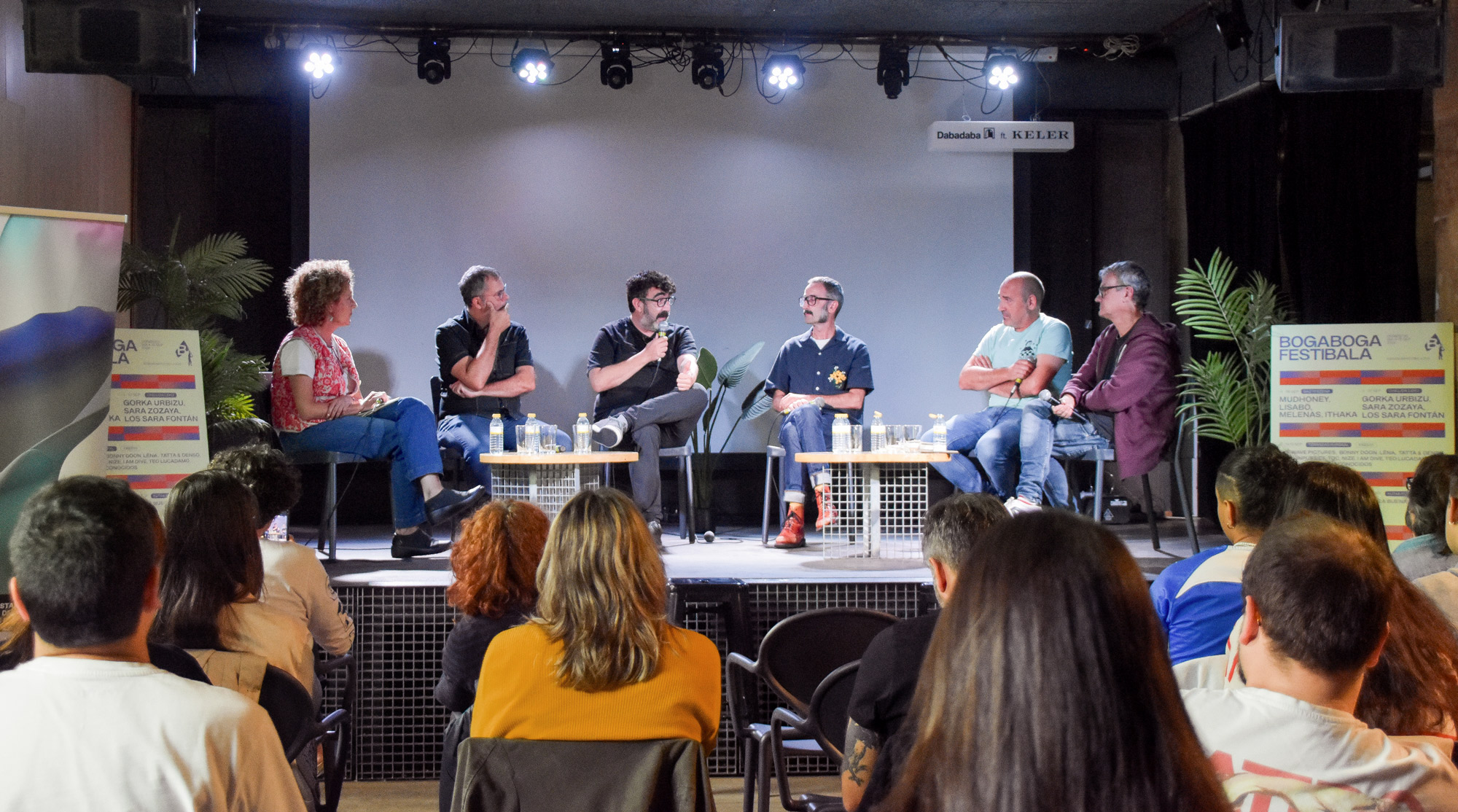A space to enjoy the mix between arts and communities
- After a long period of transformation of the space, in March 2021 the Borderline Factory was inaugurated, a "place of work and meeting" located on the side of the Hendaia station. In order to get to know the project, we have made an appointment with Ander Fernández, member and promoter of it, to tell us what the Bordeline Factory is and what led them to undertake such an initiative in Hendaia.
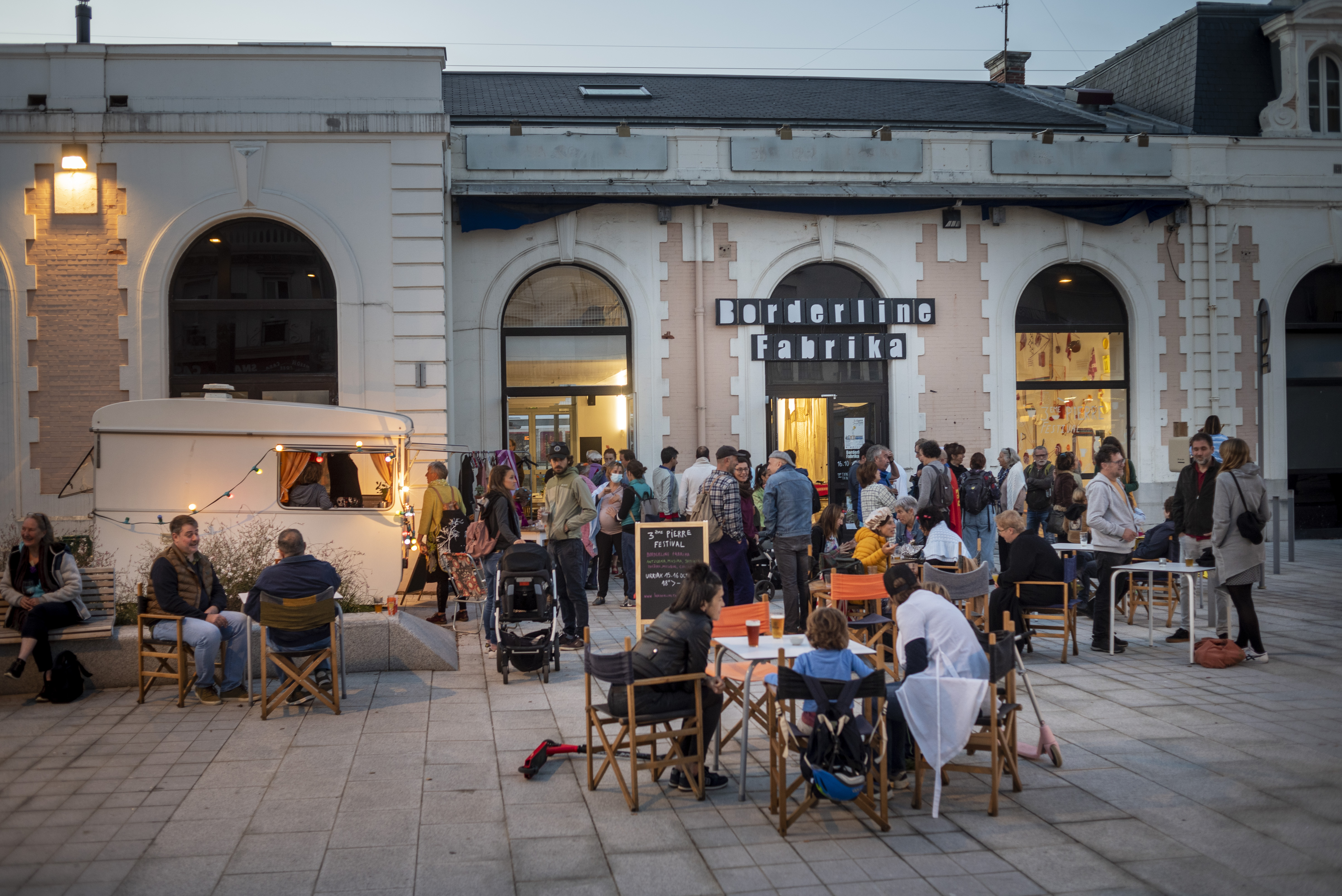
What is the Borderline factory? Where does the project come from?
At first, the Borderline Factory is the result of the enthusiasm of three people. We saw the need to create a meeting space in Hendaia. Later, being these three people of the performing arts, it became a project to have a work space. We needed work spaces, we needed them; to start with, we needed a space of creation, of work around art, of sharing the created. For this we found it an ideal bar. In addition, we needed a space for office tasks, because although we're artists, we work a lot in the office. These are three spaces: on the one hand, the bar as a space of socialization and sharing created, on the other, a space of practice, both for us as a tool, but also as a point of transmission, for workshops and, finally, for offices.
Borderline is a partnership created 5 years ago for a space. Here were two ideas or paths: On the one hand, the City Council, in Mendizola, provided offices to 6-7 professional Hendaia companies in order to be able to carry out the office tasks to which I referred earlier, where we met people from the profession. In parallel, in response to a call made by SNCF, we met this area of the Hendaia station. The SNCF called for a project in the form of the Trilo-Lieu or third place to the empty spaces of many railway stations of the former Aquitaine, and three people who saw the need for a space we saw interesting this space of the station.
We came up with people who worked in the offices that the City Hall left us and presented a project for this space. We had to introduce the project, make ourselves credible, demonstrate that behind us we had a viable economic model, budgets, a team… and they approved it after long negotiations.
The partnership has been expanding along the way, we made different calls, lots of open meetings, until we created the current working group. However, it has to be said that the association has been working in years when we have had no premises or spaces, and we have kept the project alive, it has come its way. During these years we have carried out formations, activities there and here, street radio shows, theatres, small concerts… intinaneja, as we have been able, but we have been active.
The work of space transformation has gone very long, there have been significant delays for various reasons and when it left, a global pandemic came. It can be said that we have had a kind of eye disease, but finally the work ended last year and today the Borderline Factory is a Third Place.
How is the Bordeaux Factory organized?
It's a partnership. From the very beginning there is an idea of becoming a cooperative, but today it has not materialised. From an organisational point of view, there is a group of co-chairs, with legal responsibilities, and an operational group called "etxekoak". The agreements are taken by the house, according to the statutes, but always in cooperation with the presidents.
Then there are partners at another level who support the project. With partners we have not done the work we would like, but give financial support to the Factory, but we have to reflect on what benefits we can bring to partners, how we can involve partners in the project. There are approaches for members to participate voluntarily in the bar, to get involved in the organization and management of different events… They have already been done and are done, but they want to expand more.
That's the organizational chart. Then there are working groups, as in all associations, a working group dealing with each area. We hold monthly meetings, all working groups together and weekly free sessions so you can come. Many members of the association are intermittent and that allows us to liberate the work.

You mentioned it at the beginning, but why a bar? What were you looking for with the bar opening?
On the one hand, we believe that in Hendaia there was a lack of such an area bar. People have greatly appreciated the opening of the bar and, on the other hand, because, as I said at the beginning, it is a good place for socialisation. Hendaia has a lack of confusion among communities. There are different communities in the village, very strong societies, but each one goes by their side, it's very atomized. We believe it can play a proper role in intercommunal exchange, which can fill that gap. In addition, this mixture is a place that art will make from culture. Borderlin can influence the confusion of these communities. It is not just a place of tax consumption. It doesn't want to be that.
A bar is a good place to mix people together, communicate and exchange experiences, but also to enjoy, enjoy and then speak quietly. Space for cultural actions and initiatives. Its members, following the initial idea, are a good place to publicly expose our creations.
It is also a strategic place for north-south exchange. To bring people from both sides, to make deals between them and create networks.
It is true that a train station provides an adequate mix of communities.
Yes, a train station is very interesting for mixing between communities. As a concept, the idea of the step was very attractive from the very beginning. Here people go back and forth, not only the Basques, but also far-off people, where there are people from Normandy, English, Andalusians… There are also many Portuguese, everyone knows the Hendaia train station. The mole also comes.
Moreover, it's not just a station. It is clear to us that we are located in the neighbourhood and attach great importance to the environment. We work for and for the neighborhood itself. From the very beginning, and before starting to work in this space, we have carried out artistic activities in the neighborhood, in the homes of the neighbors, there have been works to recover the memory of the neighborhood, artistic circuits, shows. It's about living the environment and living the space and the neighborhood, living in the neighborhood. And bring people from outside.
In addition to the bar space, they organize offices and an associated workspace. Who is coworking for?
We don't know very well, we haven't defined it. We will post an offer that may be valid for anyone who successfully enters it. It doesn't have to be people of art or culture. We assume that it will naturally approach the people of the art world, but we will not limit ourselves to that. Open to any interested person.
You mentioned that you have conducted training sessions. What is it about?
So far, training workshops have been held on an ad hoc basis, but the intention is to organize them on a continuous basis. We would like to have weekly training workshops. We have to start organizing all of this, now they're starting the machinery. Today there are Tango courses at different levels, it has been a circus workshop for children and parents, and intensive courses for professionals, formations for the creation of circus, a circus dramaturgia workshop with Roberto Magro… But we want to start organizing it continuously for the young. As volunteers, we do things when we can, we have to keep pace. We have learned to be patient and we have to.
What place does the Basque Country occupy at the Borderline Factory?
At Borderline Fabrika we are half and half of those who know Euskera and do not know it, but there is sensitivity and desire for Euskera. We know that there is often a leap of encouragement or desire into practice, but we can do nothing, but encourage the desire to understand and practice people. In the foundational artistic manifesto of the association the importance of Euskera was expressed. Internally, we do not have the capacity to hold meetings in Basque, but outward, in all activities the Basque is prioritized.
You spoke a little before the North-South relationship. Does Bordeline want to influence beyond the border?
Of course, you win. Borderlin wants to work across borders and influence. Although we want to work on both sides of the border, it is clear that it is not easy to work beyond the border. Everyone has their own environment and language also influences. Furthermore, we would like to have more influence on cultural borders or between social groups than on geographical borders; as we said earlier, we want to break all borders, but we do not arrive. In the end, we'll do things that work. Things of interest to Borderlin members will be done and they will be tried to communicate and disseminate them, thinking that more people will be interested. We want to break borders and attract people, but I don't know what the way is, it's not easy to guess who to turn. Society is so broad! The answer would therefore be yes, yes, but we do not know how.
Third sites
In community construction, the third place is a social environment separate from the two traditional social environments. Self housing would be the first place and workplace, the space where people spend most time, the second place (concept associated with triangular and pendular mobility). The term Place 3 was invented by the American urban sociologist Ray Oldenburg and worked in depth on the books Celebrating The Third Place and Great Good Place, on the importance of informal public spaces.
In the words of Oldenburg, third places are important for civil society, democracy, civic engagement and allow other forms of appropriation and sharing of space. They are spaces where individuals can meet, gather and exchange experiences informally. It is considered a complementary component oriented to the social life of the community. Third places are then the "anchors" of community life and encourage broader and more creative interaction. In other words, "your third place is the place where you relax in society, where you meet familiar faces and meet new ones." The third place, therefore, is subjective, the third place of someone does not have to be the third place of others, and the space that a community considers third place, sometimes, can be considered strong or unnecessary by the externals.
In The Great Good Place, Oldenburg explains the common points of third places:
Neutral earth. Occupants of third places are not obliged to be present. There are no guest/host relationships and help create or develop friendship.
Open space. Oldenburg calls this characteristic "Leveler", referring to far-left political formations aiming at the abolition of social classes and hierarchical systems in the English civil war. The socioeconomic situation of each one is not important in third places and contributes to the development of the feeling of bathing among users.
Communication. Oldenburg notes that, thanks to the first two characteristics, a group of people can communicate comfortably and therefore it is important that adequate communication is present in the third place.
Nice and accessible. In view of the possible differences in lifestyle or pace of life, it is important that a third place is accessible and comfortable to be there, that it responds to the expectations of users and offers opportunities to meet their friends.
Hard core. These are regular users who help to provide the space with an environment and concrete characteristics, but the usual ones help the newcomers to feel adapted to them, to feel like joining the whole.
Low profile. It's not a highlight of exposure. They are spaces away from slender attitudes or deformities and exaggerations. They are nice places that accept people of all conditions.
Environment. The atmosphere must be joyful, debates are conducted respecting each other, always in a friendly tone and not marked with tension or enmity, inviting the newcomer to participate.
House away from home. It needs a warm environment and offers its occupants a sense of participation that allows them to feel rooted in space; in their development they can be as useful or useful as the house.
In 2021 we began to hear the first echoes of the Guggenheim Urdaibai project. The then General Manager Unai Rementeria told us that it would be done yes or yes. To reinforce his claims, he left 40 million euros “shielded” by the time the museums were built. There it is!... [+]
We have known Aitor Bedia Hans, a singer of the Añube group for a long time. At that time we were reconciled with BEÑAT González, former guitarist of the Añube group. It was at the university time, when the two young people of Debagoiena came to Bilbao to study with music in... [+]
Two years ago Urdaibai Guggenheim Stop! Since the creation of the popular platform, Urdaibai is not for sale! We hear the chorus everywhere. On 19 October we met thousands of people in Gernika to reject this project and, in my opinion, there are three main reasons for opposing... [+]
With this article, the BDS movement wants to make a public boycott of the event to be held on 24 September at the Guggenheim in Bilbao. In it, they will have the presence of the renowned Zionist artist, Noa, who will present his last record work.
When, in the context of the... [+]
Mende batean, Baionako Euskal Museoak izan duen bilakaeraz erakusketa berezia sortu dute. Argazki, tindu edo objektuak ikusgai dira. 1924an William Boissel Bordaleko militarrak bultzatu zuen museoaren sorrera, "euskal herri tradizionalaren" ondarea babesteko... [+]



